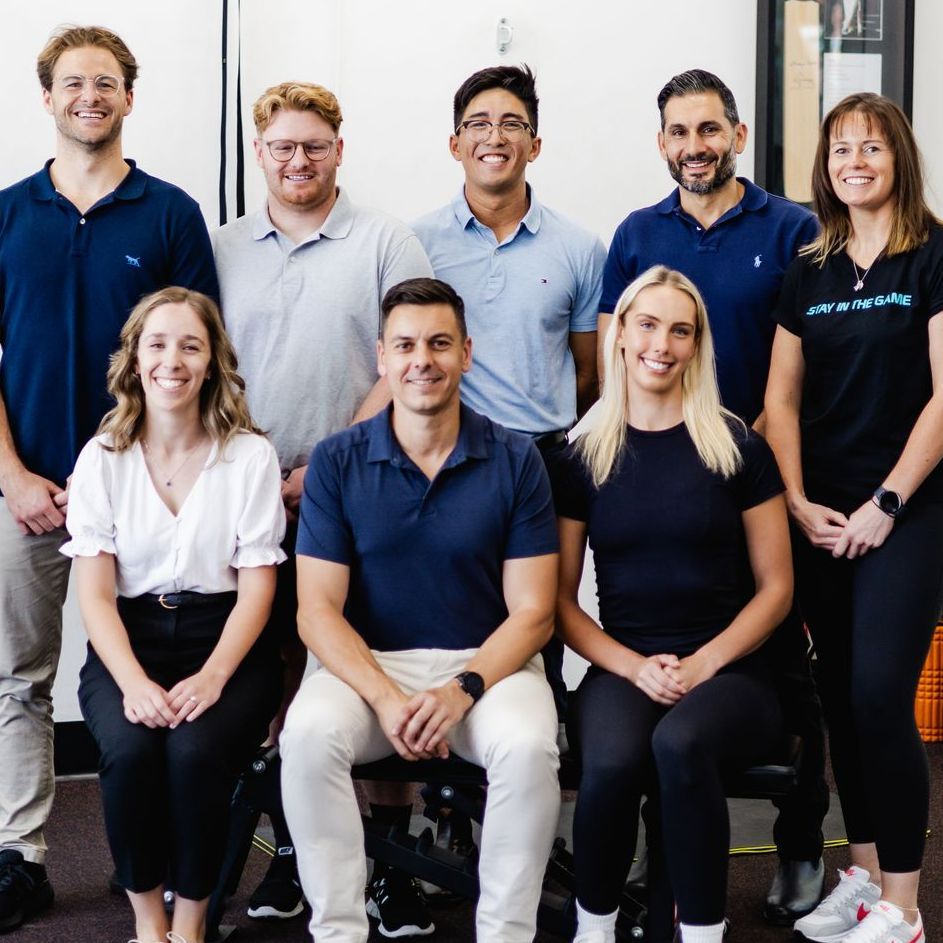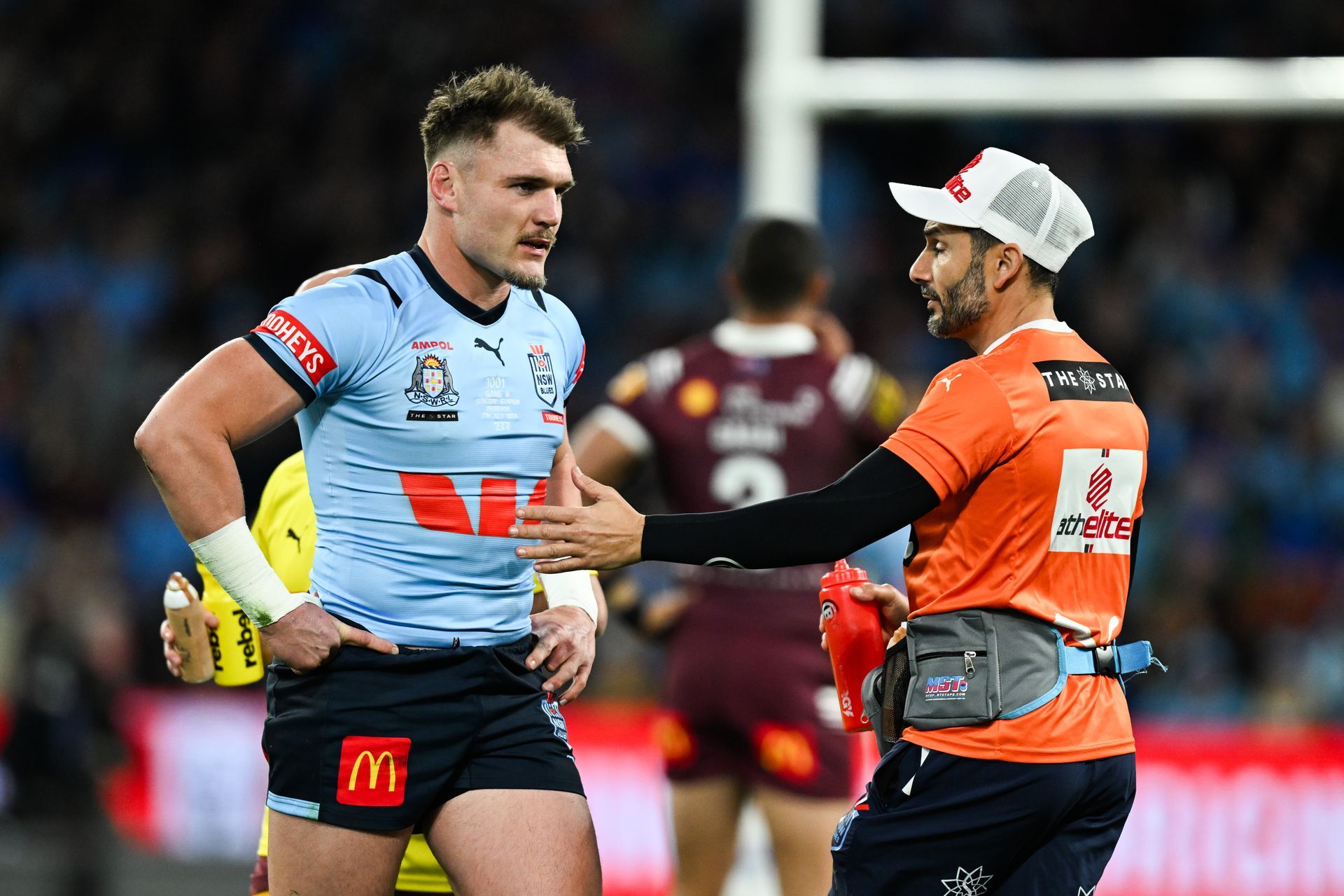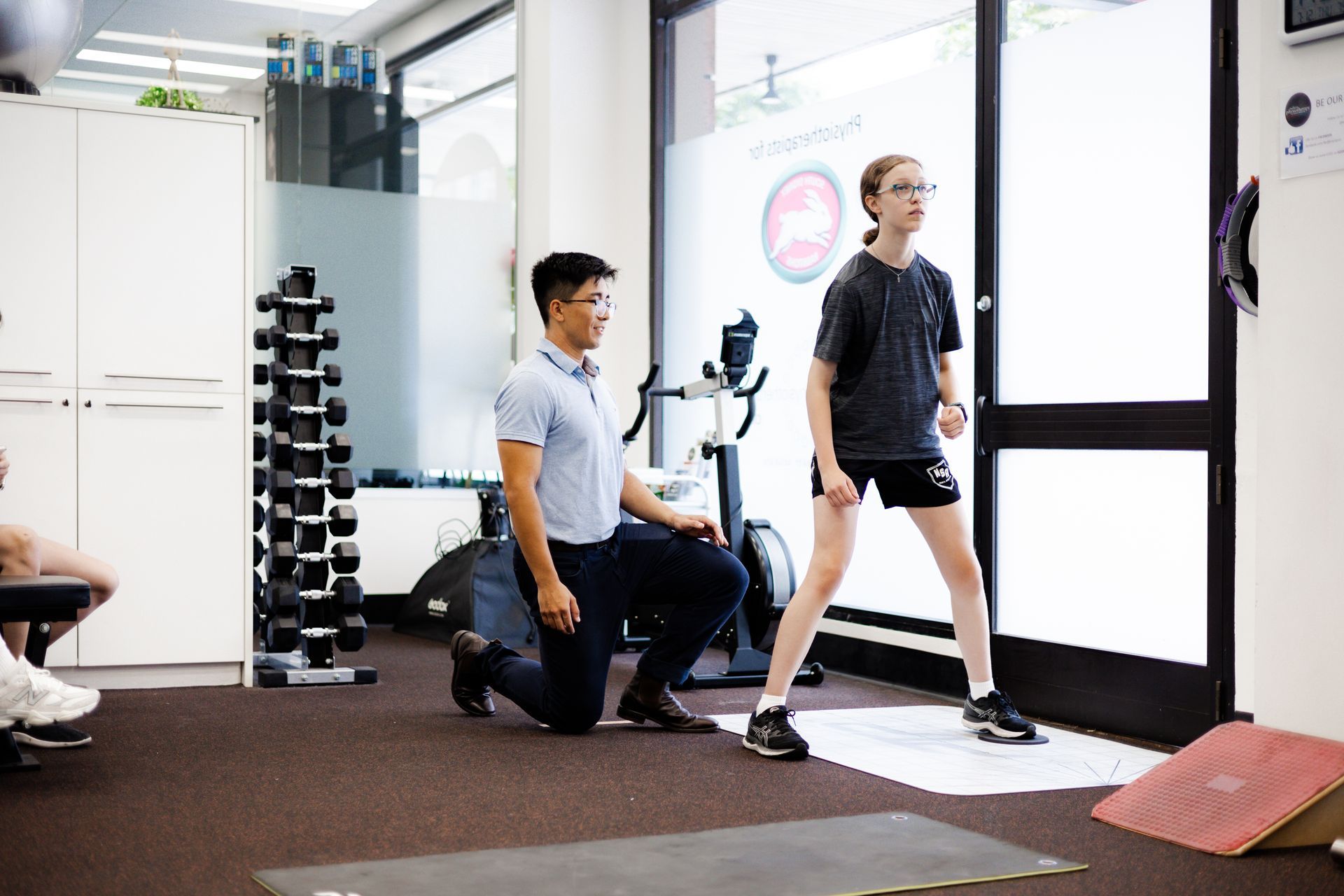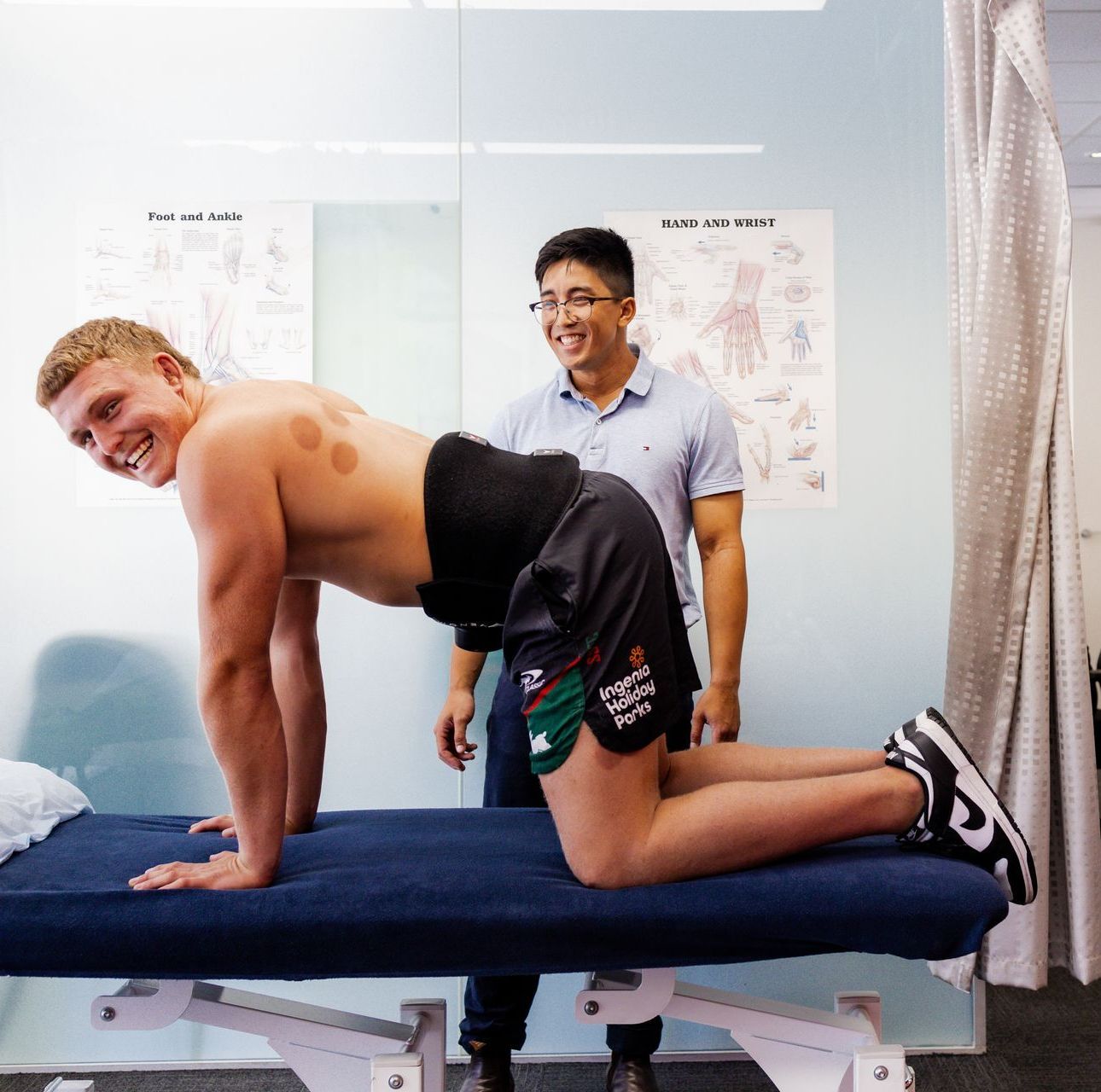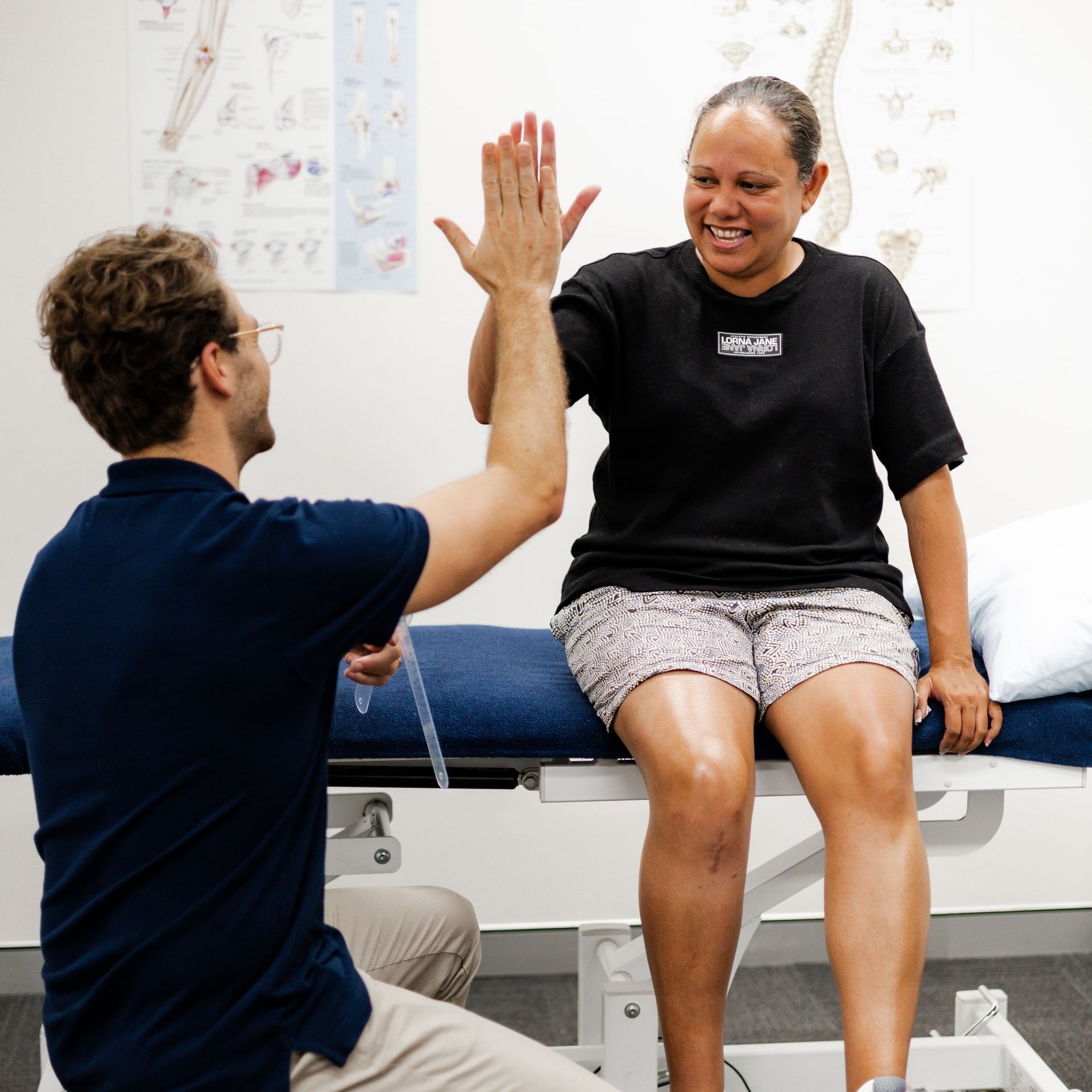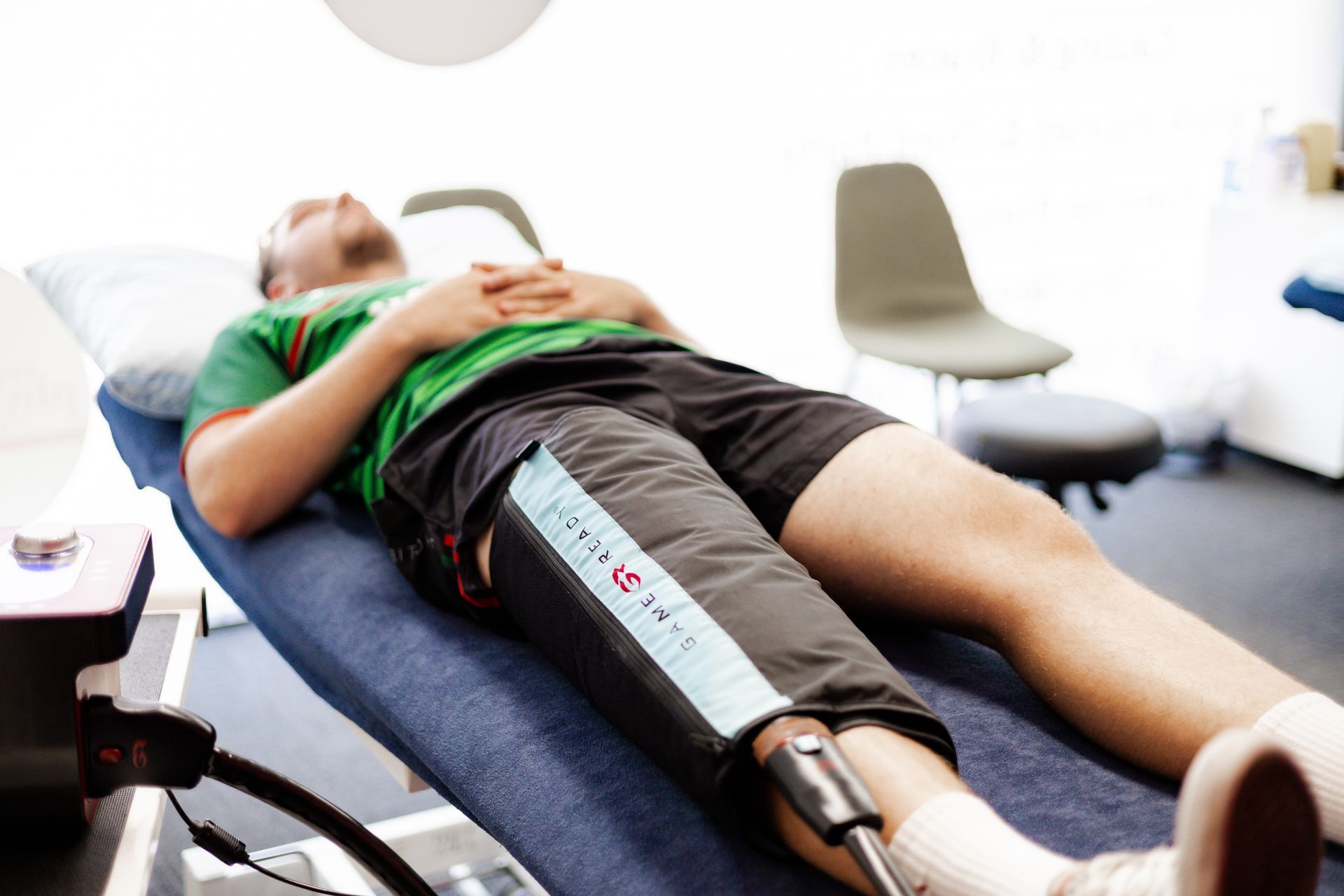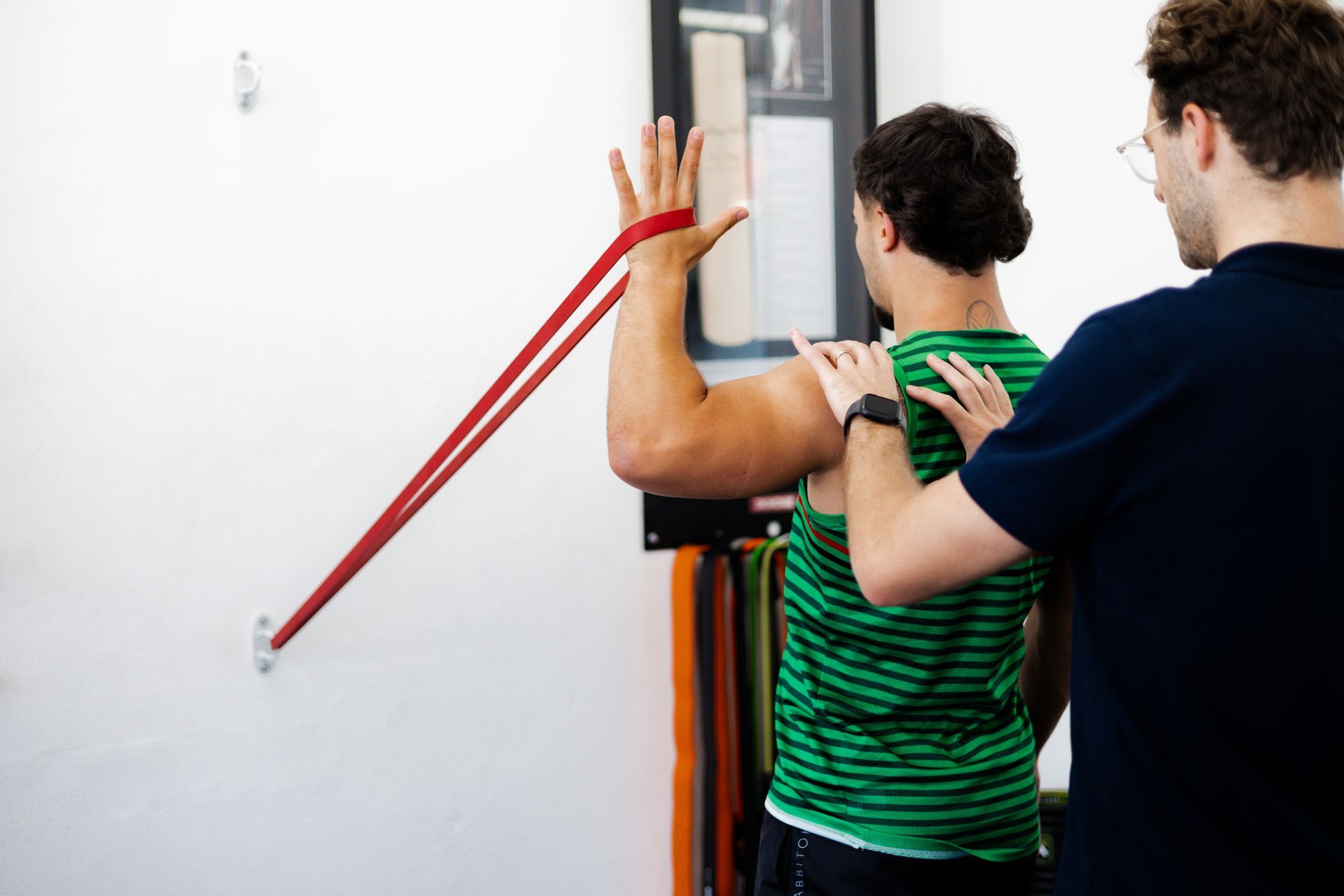Sports Injuries
Sports injuries can range from acute conditions such as strains, tears, fractures, and bruising, to overuse injuries like inflammation, tendonitis, and muscle spasms.
Accurate and early diagnosis is crucial in these cases to ensure effective management. When necessary, our therapists will refer you to appropriate practitioners for further examination or investigations such as MRI scans, X-rays, or ultrasound. We also collaborate closely with a network of Sports Physicians and specialists to provide the best advice and outcomes for our clients.
Our therapists will develop a detailed sports-specific program to restore full mobility, strength, and control to the injured limb. This includes progression through specific drills required to ensure a seamless return to your sporting activities without further symptoms or relapse of the injury.
Neck and Back Pain
Neck and back pain are prevalent issues in modern society and major contributors to absenteeism and disability. Many people still struggle to manage these conditions and may not fully understand the crucial role that physiotherapists play in treating and resolving back pain symptoms.
Our skilled therapists offer a variety of treatments designed to alleviate neck and back pain. They also provide essential education on how to care for your back to prevent future problems. By teaching you proper techniques and habits, our physiotherapists empower you to maintain your back health long-term.
Additionally, we offer personalised strength and core stability programs tailored to your needs. These programs are designed to fortify your spine against the demands of daily life, providing an extra layer of protection and support.
Post-Op Rehabilitation
A well-structured rehabilitation program following any orthopaedic procedure is vital for achieving the best possible outcomes. Whether you’ve undergone a knee reconstruction or a hip replacement, our physiotherapists are dedicated to helping you avoid potential post-operative complications and guiding you back to your everyday activities as swiftly and safely as possible.
Our physiotherapists will set specific goals tailored to your rehabilitation needs. These goals will vary depending on your individual circumstances, whether it’s returning to high-level sports or simply resuming work, home, and recreational activities. By focusing on personalised targets, we ensure that your recovery journey is aligned with your aspirations and lifestyle.
Through our guided rehabilitation programs, we aim to restore your strength, mobility, and overall function, empowering you to regain your independence and confidence.
Our team is committed to providing you with the support and expertise needed to navigate your recovery process effectively. With our dedicated care, you can look forward to a smoother and more successful return to your daily routine, free from the limitations imposed by your orthopaedic procedure.
Dry Needling
Dry needling is a rapidly growing modality in the field of physiotherapy, renowned for its effectiveness in addressing a wide range of acute and chronic conditions.
This technique involves the insertion of sterile acupuncture needles into specific, sensitive ‘trigger points’ within muscles. By targeting these trigger points, dry needling can effectively release chronically tight muscles and muscles in spasm, which in turn helps to alleviate pain and restore normal muscle function.
It is important to distinguish dry needling from traditional acupuncture. While both techniques use similar needles, dry needling is based on Western anatomy and medicine, rather than the principles of Chinese medicine. This distinction ensures that dry needling is firmly rooted in modern medical understanding and practices.
Our team of experienced physiotherapists is well-versed in the application of dry needling. They will conduct a thorough assessment of your injury or condition to determine if dry needling is an appropriate treatment option for you. By integrating dry needling into your overall treatment plan, our physiotherapists aim to enhance your recovery process, relieve pain, and improve your overall physical function.
Work Related Injuries and Third Party
Workplace injuries, whether from incidents like falls or from repetitive overuse, are all too common and can be highly debilitating. Our physiotherapists specialise in not only rehabilitating these injuries but also offering expert advice on work strategies and exercises to ensure a safe and lasting return to work.
Each of our therapists is WorkCover approved. We work closely with your treating doctor, insurance case managers, and employers to make the return-to-work process as seamless as possible. This comprehensive approach may also include worksite visits and ergonomic assessments to further support your recovery.
In collaboration with our sister company, InTouch Physiotherapy, we provide onsite physiotherapy and injury management services to various organisations across Australia, including Qantas, one of the nation's most iconic brands.
For more information about our workplace services, visit the InTouch Physiotherapy website.
Athletic Screening
Our screening protocols are meticulously tailored to your specific sport, ensuring that all relevant aspects are thoroughly assessed. By analysing your unique needs and performance metrics, we can create a personalised program designed to address any deficiencies and mitigate injury risks.
The findings from our screenings serve as the foundation for developing customised strategies that enhance your overall athletic capabilities. This personalised approach not only helps in injury prevention but also optimises your performance potential, enabling you to excel in your chosen field.
Our team is committed to your success and well-being. We work closely with you to ensure that the screening process is comprehensive and informative, providing you with valuable insights into your physical condition and areas for improvement. By focusing on your individual requirements, we can devise targeted interventions that support your athletic goals and promote long-term health.
Exercise Prescription
Following on from our specific and detailed screening, whether it is for your chosen field of work or sport, a tailored exercise program is the most important component to help prevent injury and help you achieve your maximum potential. Following any injury exercise therapy is a key component of rehabilitation and helps to prevent the re-occurrence of that injury.
Our elite physiotherapists will also outline a detailed and specific program to restore full mobility, control and strength to the injured limb as well as the fitness required to ensure the seamless return to your normal activities.
Building on our comprehensive and detailed screening, whether for your chosen profession or sport, a customized exercise program is crucial in preventing injuries and helping you achieve your maximum potential. These tailored programs address your unique needs and demands, making them essential for long-term success.
Exercise therapy is a key component of rehabilitation following any injury. It not only aids in recovery but also helps prevent the recurrence of the injury. Our skilled therapists will design a personalized and specific program to restore full mobility, control, and strength to the injured limb. This is vital for regaining functionality and ensuring that you can perform your daily activities without limitations.
In addition to focusing on the injured area, our exercise programs are designed to enhance overall fitness. This holistic approach ensures that your body is well-prepared to handle the demands of your normal activities, whether at work, in sports, or during recreational pursuits. By improving your general fitness, we aim to support a seamless and confident return to your routine.
Recovery & Wellness
Our NormaTec Boots, GameReady Ice Compression, and Venom Heat Belts are designed to accelerate muscle recovery, reduce soreness, and enhance circulation.
NormaTec Boots use dynamic pneumatic compression to increase blood flow, reduce muscle fatigue, and enhance lymphatic drainage, helping athletes recover faster after intense training. Research supports its effectiveness in reducing muscle stiffness and post-exercise inflammation.
GameReady Ice Compression combines cold therapy with intermittent compression to reduce swelling, manage pain, and speed up post-surgical recovery, with studies demonstrating improved joint mobility and reduced reliance on pain medication.
HyperVenom Heat Belts deliver soothing heat therapy combined with vibration technology, helping to increase flexibility, reduce stiffness, and improve blood flow. Heat and vibration work together to enhance soft tissue recovery and neuromuscular relaxation.
These advanced recovery solutions cater to athletes, post-operative patients, and anyone looking to optimise mobility, minimise downtime, and support long-term musculoskeletal health. Our team ensures that your recovery aligns with your specific needs, whether you're returning from injury, maintaining peak performance, or simply looking to move better.
At Alexandria Physio, we integrate the latest recovery science with hands-on care, helping you stay active, pain-free, and at your best.
NDIS & DVA
At Redfern Physio, we proudly support participants of the National Disability Insurance Scheme (NDIS) and the Department of Veterans’ Affairs (DVA).
Our experienced physiotherapists deliver evidence-based, tailored care to enhance movement, function, and independence, whether you’re working towards NDIS physiotherapy goals or accessing treatment with a DVA GP referral.
We also collaborate with our in-house Accredited Practising Dietitian and other allied health professionals to ensure your rehabilitation and recovery are coordinated for lasting results.
Nutrition & Dietetics
At Redfern Physio, we understand that movement and recovery are only part of the picture. Our in-house Accredited Practising Dietitian offers personalised nutrition support to complement your rehab, improve recovery, manage health conditions and fuel performance.
Whether you are an athlete looking to optimise training outcomes, someone managing gastrointestinal symptoms, or simply wanting to make confident food choices, our dietitian works with you to create achievable, sustainable nutrition plans grounded in the latest research.
Our integrated care model means your physiotherapist and dietitian can work together to support your broader health goals, ensuring that all aspects of your treatment align for long-term results.
Conveniently located for your care.
Located just a short walk from Redfern Train Station and near Redfern Oval, our clinic is easily accessible by public transport, with free 2-hour street parking available in surrounding streets.
Give us a call at 02 8068 5158 or email info@redfernphysio.com.au



